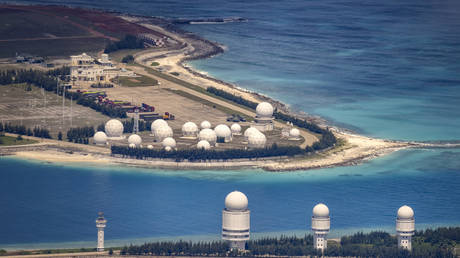Armageddon Averted: Four Times Faulty Technology Nearly Caused a Nuclear Holocaust
from Sputnik News:

On November 9, 1979, a computer error at the North American Aerospace Defence Command (NORAD) nearly sparked a nuclear war after a faulty computer mistakenly reported that the USSR had launched a mass attack. The incident was one of close to half a dozen major computer-related nuclear close calls to threaten humanity with extinction.
1979: False Alarm in the Age of Disco
1980: Faulty 46 Cent Chip Almost Sparks War
1983: Soviet Lieutenant Colonel Vs. Early Warning Satellites
1979: False Alarm in the Age of Disco
Forty years ago today, operators of the early warning computer at NORAD headquarters in Colorado notified President Jimmy Carter’s national security advisor Zbigniew Brzezinski that the Soviet Union had launched over two hundred nuclear missiles at the United States, with the president given less than ten minutes to provide authorisation for a US counterattack. The false alarm was triggered by Wimex, a cutting-edge computer network connected to US satellites and radar systems, helping to serve as NORAD’s eyes and ears for a potential Soviet attack. Minutes after receiving the first call, Brzezinski received a second call, with computer operators now informing him that the number of inbound Soviet missiles had grown to 2,200 – an all-out nuclear surprise attack.
But there was a problem. In a third telephone call, Brzezinski military assistant William Odom informed his superior that physical early warning systems were not detecting any Soviet attack. With the alarm called off, Brzezinski decided not to contact Carter and went back to bed. Later investigation found that the potentially deadly glitch was caused by software simulating a Soviet attack being “inexplicably transferred into the regular warning display” at NORAD HQ. The incident was followed by three more similar false alarms in the coming months, and evoked palpable fears from US lawmakers and the public at large, with these fears later expressed in popular media such as the 1983 film WarGames.
The 25-ton blast door in the Cheyenne Mountain nuclear bunker is the main entrance to another blast door (background) beyond which the side tunnel branches into access tunnels to the main chambers. NORAD, Cheyenne Mountain, Colorado
1960: Moonrise Missile Alert
On October 5, 1960, in perhaps the first publicly reported technology-related nuclear close call, the NORAD control center received a report from a radar station in Thule, Greenland that the USSR had launched dozens of nuclear weapons against US targets. The information was checked and rechecked, and soon proven to be a false alarm. Doubts were raised by the fact that then-Soviet leader Nikita Khrushchev was visiting New York City for the UN General Assembly. Investigators later determined that the radar system had mistaken the signal emitted by the moonrise over Norway as an all-out Soviet attack.
THULE AIR FORCE BASE
Aerial view of Thule Air Base in western Greenland
1980: Faulty 46 Cent Chip Almost Sparks War
On June 3, 1980, at 2:26 am Eastern Standard Time, computers at the US Strategic Command headquarters in Nebraska bleeped a warning that two submarine-launched missiles had been launched at targets in the US. 18 seconds later, further launches were detected. The commander on duty ordered the pilots of B-52 and FB-111 bombers to prepare to launch for counterattack. NORAD’s central systems reported no launches, but the Pentagon’s National Military Command Center echoed a warning on its computers. After a threat assessment conference, the alert was called off. A similar alert took place three days later, and again proved a false alarm. It was later discovered by investigators that the false alarm was caused by the failure of a 46 cent computer chip.
© AP PHOTO /
Crew member at the Strategic Air Command Airborne Command Post in Omaha, Neb., Feb. 18, 1973.
1983: Soviet Lieutenant Colonel Vs. Early Warning Satellites
In 1983, amid the most serious period of Cold War tensions since the 1962 Cuban Missile Crisis, Soviet Air Defence Forces Lieut. Col. Stanislav Petrov’s satellite early warning network computer at the Main Centre for Missile Attack Warning in Kaluga region detected the launch of multiple US Minuteman missiles at the USSR, with Soviet command given less than forty minutes to decide on a counterattack. Given the limited nature of the reported US strike, Petrov suspected a computer error, and informed his superiors that the computer had given a false positive, given lack of confirmation by ground radar. Later investigation showed that the false alarms were caused by the alignment of sunlight on high-altitude clouds and Soviet Oko early warning satellites’ high altitude orbits.
Loading...



